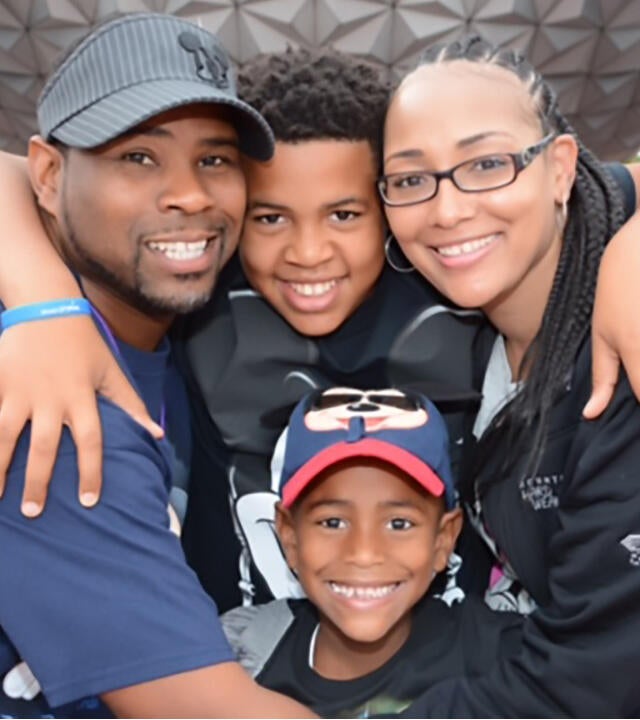
Our Commitment to Diversity, Equity & Inclusion
This week marks the beginning of Black History Month, an annual celebration of the achievements, influences and legacies of Black Americans. At Make-A-Wish, it is only through our mosaic of different cultures, perspectives and experiences that we can grant life-changing wishes to every eligible child.
Throughout the past few years, we’ve taken steps to become a more diverse and inclusive organization, ensuring every child receives an equitable experience. We’ve taken steps, but there are still miles to go.
On a national level, Make-A-Wish has made a commitment to championing diversity, equity and inclusion, fostering an organization that is accessible and welcoming. In 2020, the Diversity, Equity and Inclusion (DEI) Council was formed to bring disparities to light and to ensure that we are reaching EVERY child, despite their racial or socioeconomic status.
The DEI is made up of representatives throughout the United States, from every chapter size and employee level, and is tasked with tackling our organization’s racial barriers in three main areas: Wish Granting, People Practices and Board Engagement. The goal is to ensure that Black children have a fair and equitable wish experience, that we are properly reaching Black communities, that our hiring and pay practices are equitable across Black applicants and colleagues, and that we are pressing to promote Black representation on our Boards across the U.S.
Locally, we’ve made improvements on how we reach our wish kids and made strides towards making sure all wish kids receive an equal wish experience. In New York City, in particular, we faced a large disparity for our children in Brooklyn and the Bronx. For many years, most of our chapter’s wish-granting volunteers lived in Manhattan or Long Island. Many were uncomfortable traveling to certain neighborhoods in Brooklyn and the Bronx to interview wish kids. Without volunteers to meet with these children and families and get the ball rolling, their wishes were being delayed.
To remedy this, we held massive recruitment efforts to expand our volunteer pool in both regions. We founded Community Councils to help us in the effort and increase our visibility. To address inequity that may arise from a language barrier, we also began to utilize a translation service for any languages our volunteers lack to ensure no child is left waiting due to the language they speak.
But there is still more to do, and we’re continuing to work on ways to improve.
We’re looking deeper at how to find children we may not be reaching, due to racial and socioeconomic barriers. One of the ways we intend to do this is to map out where children with critical illnesses actually are and break that information down by demographics. By sorting specific data as to where children with critical illnesses are, particularly those with a lower socioeconomic status, we can adjust our outreach and approach to target these areas. And we know that a wish can actually improve health outcomes for kids fighting their illness. The more we reach, the stronger the impact. It would mean we could help not only our wish children, but the community as a whole.
We’re looking to expand and diversify our volunteer pool even further. We’ve made great progress narrowing the gap between our wish kids and our volunteers being willing to go where they live, but we need more volunteers who look like them. We need to create a bridge and find volunteers who are natural allies for our wish kids and families, who come from their communities and are familiar with the experiences and barriers they face. Volunteers who understand the many different circumstances they live in will, without judgement or inherent bias, help children to feel as comfortable and as engaged in the wish process as possible. Discomfort is the enemy of the hope, strength and joy we work to bring to a child, and we want them to wish freely and truly feel the life-changing impact of a wish.
Part of forming this bridge will be from efforts to reach Black children and families in their own communities, through community organizations and churches. There are still many areas in our community that are unaware of how Make-A-Wish works and the impact a wish can have. When it’s safe to do so, we intend to go to where our kids are, educate more families and recruit more volunteers.
We also plan to conduct outreach in public hospitals, emergency rooms and urgent care centers. Research shows that many children of lower socioeconomic status are not necessarily treated with preventative care regularly, but instead in times of crisis. By forging relationships with medical professionals in these healthcare centers, we can get closer to reaching every eligible child, no matter where they’re treated.
It’s not only reaching out to make improvements, though – it’s looking within. By examining and scrutinizing our policies to ensure they’re fair and equitable, we can ensure no policy disproportionately impacts children of a certain race or socioeconomic status.
As a chapter, we’re dedicated to telling the stories of the diverse population we serve. This month, we’ll be highlighting Black members of our Make-A-Wish community, not only for what they to do for wish kids, but for what they do to give back and make a difference in their community. We’ll also use our social media to celebrate Black stories and amplify Black voices.